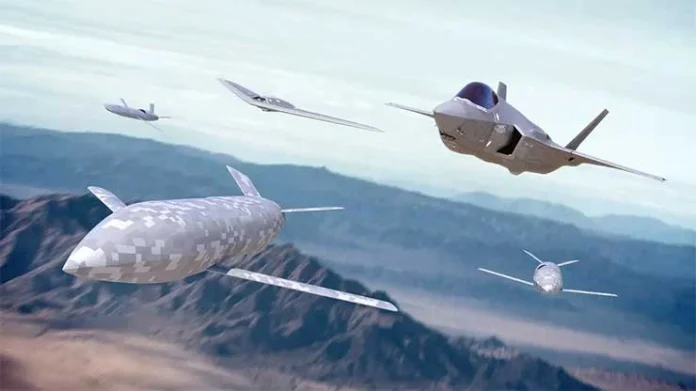Washington: Arms major Lockheed Martin is developing small, expendable drones, which break off and immediately begin flying toward a formation of F-35s.
As the F-35 pilots fly toward an enemy surface-to-air missile site, they issue commands to the drones under their control: “Collect data,” “go forward and draw fire,” or “find this target.” Based on data gathered by some of the drones, the pilots are alerted to a probable threat, and an alternate route is suggested using information from other drones that have scouted ahead.
This is the kind of technology Lockheed Martin hopes to prove out in its newly-revealed “Project Carrera,” a multi-year investment wherein the company plans to sink $100 million of its own money into drones, artificial intelligence, upgrades to the F-35 and novel communications technologies that will connect all the pieces together, John Clark, vice president of Lockheed’s secretive Skunk Works advanced development cell, said.
The upcoming demonstrations will see an F-35 pair up with “a network” of Lockheed’s Speed Racer drones, an expendable aircraft the company disclosed in 2020. However, the most significant element of the effort will concentrate on figuring out how fighter pilots can actually operate drones in the field, what advantages those drones can confer for human pilots, and how to establish trust between human pilots and the AI guiding the drones.
“This is not going to be a one-off stunt where, ‘Hey, look, we’ve connected an F-35 to this uncrewed system, and we passed a track and yay, success, we now have a media headline that says that we did crewed-uncrewed teaming,’” Clark said. “What we’re really focusing on is a systematic build up where we can evaluate that human and uncrewed system interaction, and understand how those behaviours build up over time.”
Clark said Project Carrera will inform what Lockheed eventually proposes for the Air Force’s Collaborative Combat Aircraft (CCA) effort, an assortment of uncrewed combat drone that will augment the F-35, F-22 and the upcoming sixth-generation fighter slated to be the centrepiece of the Next Generation Air Dominance family of systems.
Project Carrera’s early flight tests will focus on demonstrating Speed Racer’s airworthiness, starting with captive carry tests (Clark declined to say which aircraft will be carrying Speed Racer, or when flight tests will begin). Then Speed Racer will make its first flight, which will demonstrate whether it can be successfully launched from an aircraft and allow Lockheed to assess its performance characteristics. From there, Lockheed will conduct tests where an F-35 controls one — and then multiple — Speed Racer drones.
However, Clark stressed that the effort is more ambitious than simply proving that fighter jet and drones can operate within the same airspace.













